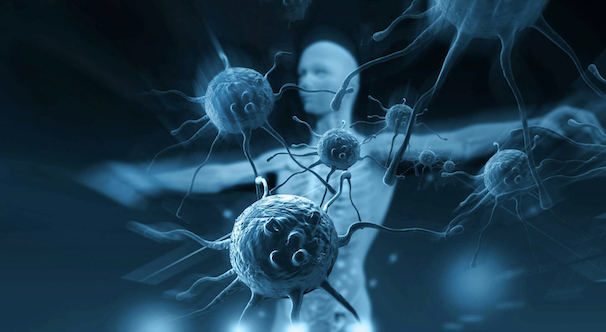The critical successes and problems in human immunology and immunotherapy
Jun 09, 2022 03:00
The immune system is a complex universe of linked cells, soluble factors, interacting cells, and tissues. The immune system's very complex structure makes it impossible to perceive it as a whole, but researchers are now attempting to fit together all of the jigsaw pieces to create a fuller picture.

The development of new specialized equipment and immunological techniques, genetic approaches, animal models, and a vast number of monoclonal antibodies are advancing our understanding of this complex system. We are beginning to comprehend the many types of cells, soluble factors, membrane molecules, cell functions, and their roles in health, aging, and illness.
This wisdom fills many gaps and, in some cases, has led to changes in our initial beliefs; for example, immune memory was thought to be specific to adaptive immune cells until innate immune memory was observed. Additionally, several new classes of innate immune cells with features similar to cytokine-secreting T cells have been discovered. Furthermore, we have better understood immune-mediated diseases, how the immune system operates and interacts with other systems and components (such as the microbiome), and how to influence this system through immunotherapy.
Discoveries in basic immunology
Immunology has undergone a dramatic transformation in the past two decades. The conventional division of the immune system into two arms, namely innate and adaptive components that collaborate to respond to external antigens or discriminate between self and non-self, has grown considerably more complex. The development and application of new technologies have resulted in discoveries and a new landscape in which the immune system establishes cross-talk with immune components, commensal microorganisms, and other vital systems such as the endocrine and nervous systems.
Subsets of cells
Characterization of novel immune cell subsets has long been a staple of immunology research. This development is evident in the recent finding of an innate counterpart of T lymphocytes, known as innate lymphoid cells (ILCs), and diverse kinds of effector CD4 and regulatory T cells.
T – CELLS and Research
Throughout the last two years, researchers have concentrated on large genetic studies of immune cells and immune-related diseases. An example is epigenome-wide association studies (EWAS) of allergy pathways. Because the epigenetic landscape is unique to each cell, EWAS necessitates careful identification of the relevant cell type for a given biological disease. EWAS has mainly been used to diagnose allergies in nasal mucosal cells and whole blood. CD8+ T cells, CD4+ T cells, myeloid cells, innate lymphoid cells, B cells, double-negative T cells, granulocytes, CD117+ cells, and plasma cell populations are all found in the nasal mucosa.
Immunology of cancer
Immune surveillance detects and destroys malignant cells by lymphocytes, which operate as sentinels to detect altered cells. Finally, when tumors advance, cancer cells exhibit poor immunogenicity and resistance to immune effector cells, allowing them to spread and escape immune regulation. Immune editing refers to the process through which cancer cells affect the immune system. Malignant cell production of tumor antigens that may activate diverse immune cell phenotypes is the key to immunosurveillance; for simplicity, any overexpressed, mutant, dysregulated, or rearranged gene product expressed by a cancerous cell may be termed a tumor antigen. It is crucial to remember that, except for those produced from virus-infected cancer cells, most of these proteins are mainly self-proteins and are therefore difficult for the immune system to detect.
Dr Paul E love’s work on Cancer immunology
Dr. Paul Ernest Love is an immunologist and clinical pathologist from the United States. Dr. Love has significant research discoveries in fundamental science and medicine. Dr. Love is a researcher at the National Institutes of Health (NIH), part of the US Department of Health and Human Services. He is still a key player at the NIH and is well-known globally in immunology.
Love developed one of the first gene-targeted models at the National Institutes of Health, mice missing expression of the CD3zeta chain of the T Cell Antigen Receptor (TCR). His lab has since created animals that are defective in multiple different TCR subunits.
The Love-laboratory has been studying the nature and function of the numerous signal-transducing modules known as Immuno-receptor-Tyrosine-based-Activation-Motifs (ITAMs) located inside the TCR for a long time. T cells, one of the lymphocyte types involved in fighting infectious diseases, employ ITAMs to activate the cell in response to foreign antigens. T cells are also involved in the detection and elimination of cancer cells and the identification of self and non-self.
Conclusion
A greater understanding of the immune system, particularly the diversity of cellular and humoral components and the tight regulation among them, as well as the interaction with other systems or elements such as the microbiota, will enable the development of new types of therapies that may be safer, more effective, and specific while posing far less toxicity than currently available therapies. This long journey has been made possible by the efforts of many researchers (spanning centuries) who have contributed their work, creativity, successes, and failures to advance our understanding of the immune system, cellular components, membrane markers, interactions, signaling pathways, and many other topics. The accomplishments that are now being made result from this enormous collaborative effort.







































































